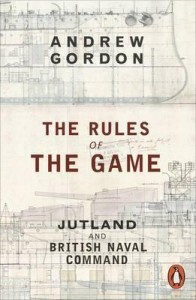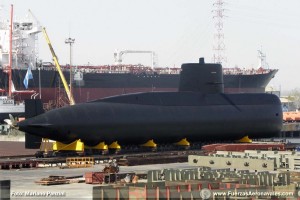This article originally featured at the Conference of Defense Associations Institute. It can be read in its original form here.
CDA Institute guest contributor Kurt Jensen, retired as Deputy Director of Foreign Intelligence, explores the question of accountability in intelligence activities.
“We have nothing to fear but fear itself,” said US President Franklin Roosevelt many years ago. This is no longer true. In the grip of an undefined terrorist threat, we should be very fearful about diminishing our freedoms through unlimited ‘security measures.’
Vague and statistically insignificant fears of terrorism have made us surrender privacy and other rights. But are we any safer? The recent ‘terrorist’ threats and incidents in Canada are unlikely to have been impeded by the enhanced intrusion in our lives to which we are all now subject. To ‘protect’ us, intrusive powers have been given to security agencies with little or no objective accountability. In this, Canadians are largely alone among developed nations. Canadian security and intelligence accountability has withered over the past decade, and is inadequate.
Intelligence staffs are honourable and scrupulous about adhering to the laws. But scrutiny of actions is a necessary tool of democracy. Great power and great secrecy make accountability reasonable and imperative in protecting the rights of citizens. The means employed are less important than how robust and uncompromising the instruments are. As it stands, Canada’s intelligence accountability régime is deficient.
Administrative oversight by bureaucrats and ministers is good – and necessary. But it is not a solution. Remember the old adage of ‘Who will watch the watchers.’ In Canada the answer is no one. The response to public concerns can no longer be ‘Trust us, we’re the good guys.’
We are at a democratic cross-roads. We cannot rationalize intrusive acts which are against the basic principles of what this country stands for by accepting that the actions taken are legal and sanctioned by Parliament. Nor should we assume that intelligence accountability, which is not at arms-length, is a solution to concerns about transgressions. Many of the intelligence intrusions into our democratic entitlements are likely here to stay but nothing precludes that citizens be protected by a robust accountability infrastructure.
The new Canadian government has announced that it will review the egregious Bill C-51 and has proposed the creation of a parliamentary oversight body under MP David McGuinty. This is a good first step but it is not enough.
Parliamentary accountability of intelligence is vital, and now seems inevitable. Canada may follow the British model which has, itself, evolved over time. The British model began as a Committee of Parliamentarians reporting to the Prime Minister. This changed in 2013 when it evolved into the Intelligence and Security Committee of Parliament (ISC), with members appointed by Parliament after considerations of nominations from the Prime Minister. A parliamentary accountability architecture would not conflict with the existing mandates of either the Security Intelligence Review Committee (SIRC) or the Communications Security Establishment Canada (CSEC) Commissioner.
A parliamentary committee should include an active mandate to oversee all authority warranted to infringe the rights of individuals or involve potentially aggressive collection strategies beyond our borders. We cannot afford unwarranted transgressions of the rights of potentially innocent individuals. But we need more than tinkering at the edges to protect rights and freedoms.
Canada does not have adequate accountability of its intelligence activities. The Office of the Canadian Security Intelligence Service (CSIS) Inspector General, a modest but important part of the oversight architecture, was disbanded by the previous government to save a budgetary pittance. Only two organizations, CSIS and CSEC, are subject to any form of arms-length accountability. While these are Canada’s two major intelligence organizations, quite a few other smaller departments and agencies have niche responsibilities (Global Affairs Canada, National Defence, Canadian Border Security Agency, Transport, Finance, etc.). These are not subject to any arms-length accountability. A more robust accountability architecture would contribute to public trust.
Equally important is the need for accountability structures to have resources adequate to address realistic challenges. Neither SIRC (for CSIS) nor the small staff of the CSEC Inspector General are adequately resourced. Arms-length accountability must be credible if public confidence is to exist.
A Super-SIRC has been discussed to oversee the entire intelligence community. This is not the answer. The intelligence units employ different tradecraft, different operational spheres (domestic and foreign), and face a host of other challenges. However, a Super-SIRC administrative structure or secretariat might work if it contained separate entities tasked with looking at different intelligence units since the necessary skills to carry out oversight functions would not easily shift from Transport Intelligence to FINTRAC (Financial Transactions and Reports Analysis Centre of Canada), for example. A Super-SIRC secretariat could oversee common functions such as the protocols involved when review agencies had to connect, share, or consult with each other when appropriate – in a sense, to ‘follow the investigate thread’ when it flows from one agency to another, as has happened between CSIS and CSEC. A second area of commonality would be for a Super-SIRC secretariat to oversee what data is provided to Canada’s intelligence partners.
An intelligence ombudsman, possibly a sitting or retired federal judge, is required to act as a court of last resort for those perceiving themselves to be penalized by the negative, illegal, or incorrect application of intelligence to their situations. People falling between the ‘intelligence cracks’ have no recourse to justice now. The media regularly reports on violations and injustices, but the media is no solution to insufficient intelligence oversight architecture.
Protecting sources and methods is imperative in the intelligence world but has become an excuse for unnecessary secrecy. Many historical intelligence files can and should be released to Library and Archives Canada for objective and arms-length evaluation by the public (i.e., mostly academics and the media). Most historical material now being held under restricted access would not compromise security. Indeed, many intelligence files are already available in Library and Archives Canada – including World War II ENIGMA material released decades ago. Releasing historical files is a confidence building measure.
Bad things happen to people who surrender freedoms without accountability. This can’t be sanctioned in a Canadian democracy. Accountability is not to be feared by those engaged in intelligence matters. Its architecture must be balanced, objective and at arms-length, and must provide an equilibrium between the rights and entitlements of citizens and the needs of national security. We’re not there now.
Dr. Kurt F. Jensen spent his career in the Canadian diplomatic service. He retired as Deputy Director of Foreign Intelligence. He is now an Adjunct Professor at Carleton University teaching courses relating to intelligence matters. (Image courtesy of Jeremy Board/Flickr.)







